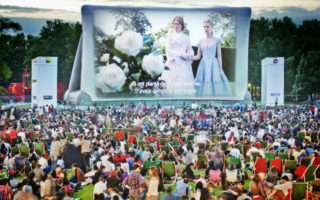Kimono- Au Bonheur des Dames: The History of Kimonos at the Guimet Museum
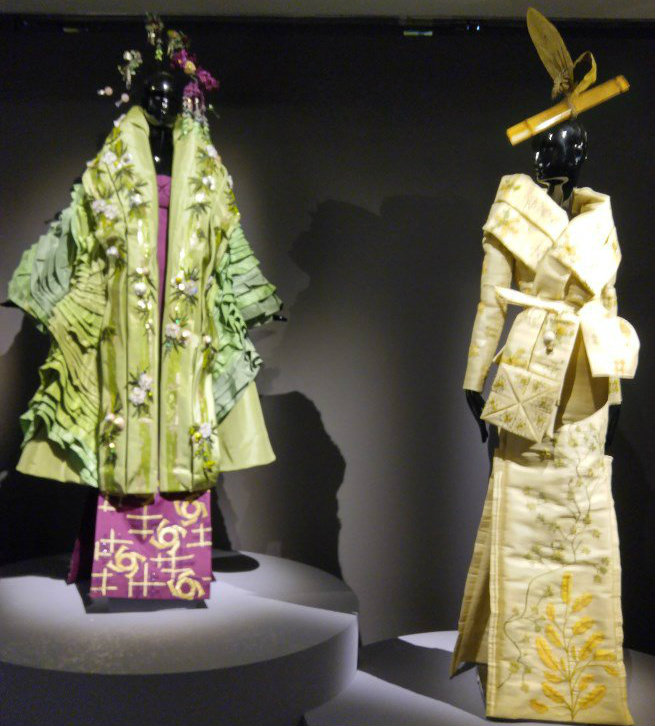
- SUBSCRIBE
- ALREADY SUBSCRIBED?
BECOME A BONJOUR PARIS MEMBER
Gain full access to our collection of over 5,000 articles and bring the City of Light into your life. Just 60 USD per year.
Find out why you should become a member here.
Sign in
Fill in your credentials below.

©Michele S Kurlander
I never imagined I would spend two hours wandering in fascination and admiration among a display of kimonos and related materials and artworks – but indeed I did a few weeks ago when I decided to visit the Musée national des arts Asiatiques – Guimet (the Musée Guimet) on Place d’Iéna in the 16th arrondissement.
The pieces in this beautiful and diverse collection were loaned to the museum by the Daimaru Matsuzakaya department store, successor to the house of Matsuzakaya, founded in 1611, which became a premier wholesaler and designer of fashion kimonos. This collection, comprised of over 150 pieces (some produced as early as the 17th and 18th centuries), has never before left Japan.
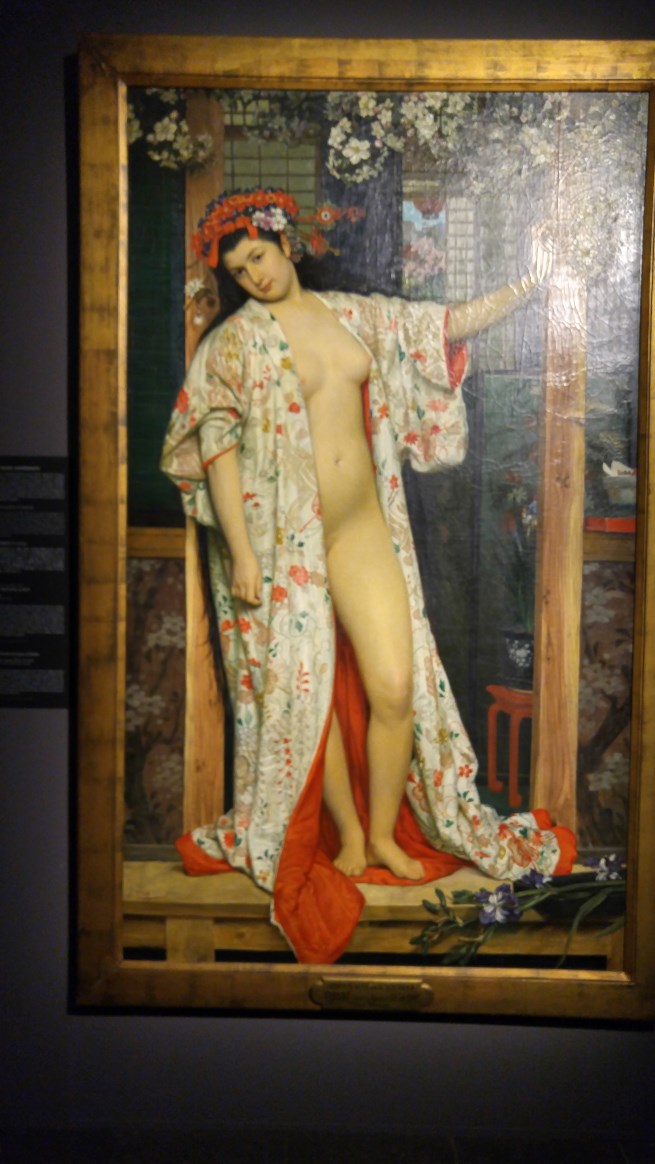
©Michele S Kurlander
Originally an undergarment too costly for anyone other than the rich, the kimono came out of the closet first as the garment of choice for samurai and courtiers, and thereafter it became a popular fashion throughout Japan. By the middle of the 19th century its popularity had moved to Europe.
The exhibit takes a look at the evolution of the fashion in Japan from the time of Edo (1603-1868) through to the Meiji period (1868-1912) to the present. It highlights the evolution of the kimono and its accessories to contextualize women and their body images in Japanese society and, later, to reinterpret these ideas in contemporary Japanese fashion and in French fashion.

©Michele S Kurlander
The kimonos at the Musée Guimet are beautifully displayed in lit glass vitrines showing the succession of the history of the garment and related items. The glass is required because of the fragility of the older pieces in the collection – and even with such protection, the curators substituted other pieces from the collection on April 1st.
The collection is structured to help the visitor understand the diversity of the kimono from the standpoint of design and color, motif, and material, as well as the differences among kimonos designed during the various historical and more modern times, including those designed and made for different levels of Japanese society.
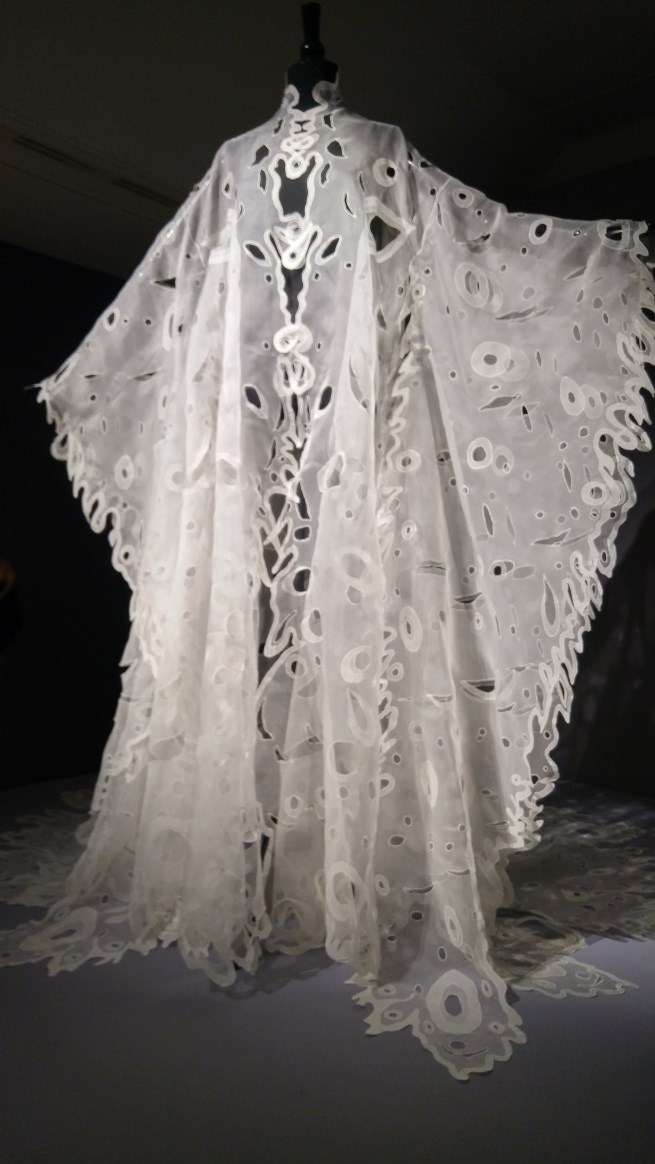
©Michele S Kurlander
The colors and designs are sometimes sumptuous and sometimes subtle, the architecture of the body and sleeves of the garments sometimes slim and flowing, and sometimes broad and boxy- a plethora of pleasure for the senses. There is a great diversity of colors and designs on display – birds and flowers and gardens, people, homes and temples; and background colors from the lightest whites and beiges to the most brilliant oranges and purples, reds and blues.
Also on display are such things as black and white catalogs from the early 18th century, used by Japanese women to choose kimono patterns; a tryptic depicting women frequenting the Matzsuzakaya store in a prior century; beautiful six-panel screens on which cranes wade or fly on a gold background; paintings; an entire case of black lacquer boxes and furniture from a wedding trousseau- displayed in a case next to one displaying a 19th century marriage kimono; and examples of haute couture from the 20th century designed with a classical Japanese point of view.

©Michele S Kurlander
The last rooms deal first with the so called “Japonisation” of fashion starting in the late 19th and early 20th century, when clothing manufacturers in Europe became enamored with the Japanese mode of dress, and started using the materials, flowing designs and bright patterns as an inspiration for clothing such as dressing gowns or sundresses; and from there, we move into the 1970s and later when high fashion designers began to use Asian motifs and unusual flowing forms for their haute couture.
In those final sections of the exhibit are examples of early 20th century garments and also a James Tissot painting done in 1864 of a nude woman in a Japanese inspired dressing gown, and at the end, the haute couture sections – which I found particularly exciting.
As I wandered by mannequins wearing Asian-inspired clothing by renowned Japanese, Italian and French designers such as Yves Saint Laurent, I marveled at the innovative and creative manner in which these designers reinterpreted Asian motifs and the flowing movement of kimono designs.

©Michele S Kurlander
Some of my favorite examples: a 2008 Franck Sorbier white silk and chiffon “butterfly wing” gown with cut outs that feels as if it rose out of a fairyland; a Jean-Paul Gaultier peignoir from 2002 in red with thin strips of green crisscrossing the body, and sleeves stretching to the ground; John Galliano’s sculptural garments (2007) where an obi-like yellow fabric crisscrosses the body like a cape, and on a second mannequin, an oversized kimono-like green coat decorated in raised pink flowers hangs over a floor length purple skirt; the modernistic shiny black and gold foil designs of Japan’s Junko Koshino.
At the very end of the last room, a video of designers talking about the show plays on an endless loop.
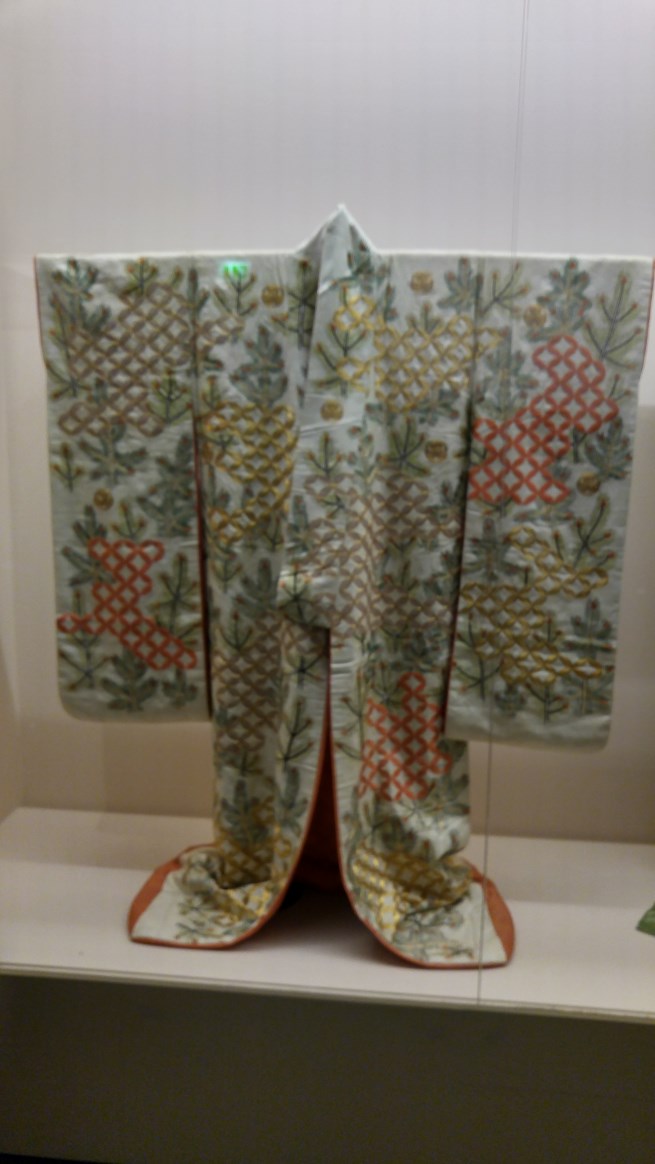
©Michele S Kurlander
While at the Musée Guimet, consider exploring the permanent collection – which includes art from the Himalayas, Afghanistan-Pakistan, Southeast Asia, Central Asia, China, Korea, India, and Japan.
Go to www.guimet.fr for details.
The exhibition Kimono-Au Bonheur des dames at Musée Guimet, 6 Place d’Iena, 16th arrondissement, until May 22. (Closed on May 1.) Open every day except Tuedays from 10 am to 6 pm. Admission 9.50 euros (7 euros reduced fare), includes the permanent collection.
Lead photo credit : ©Michele S Kurlander
